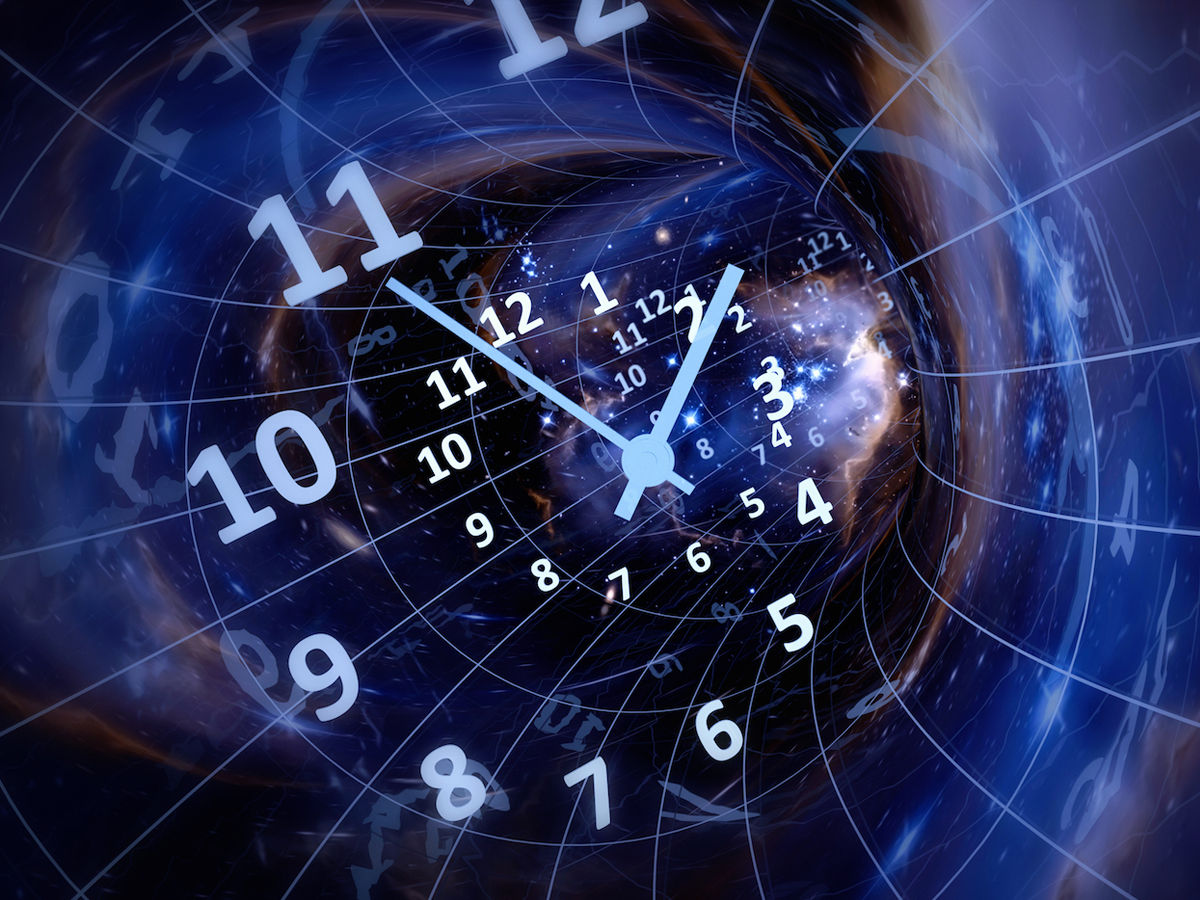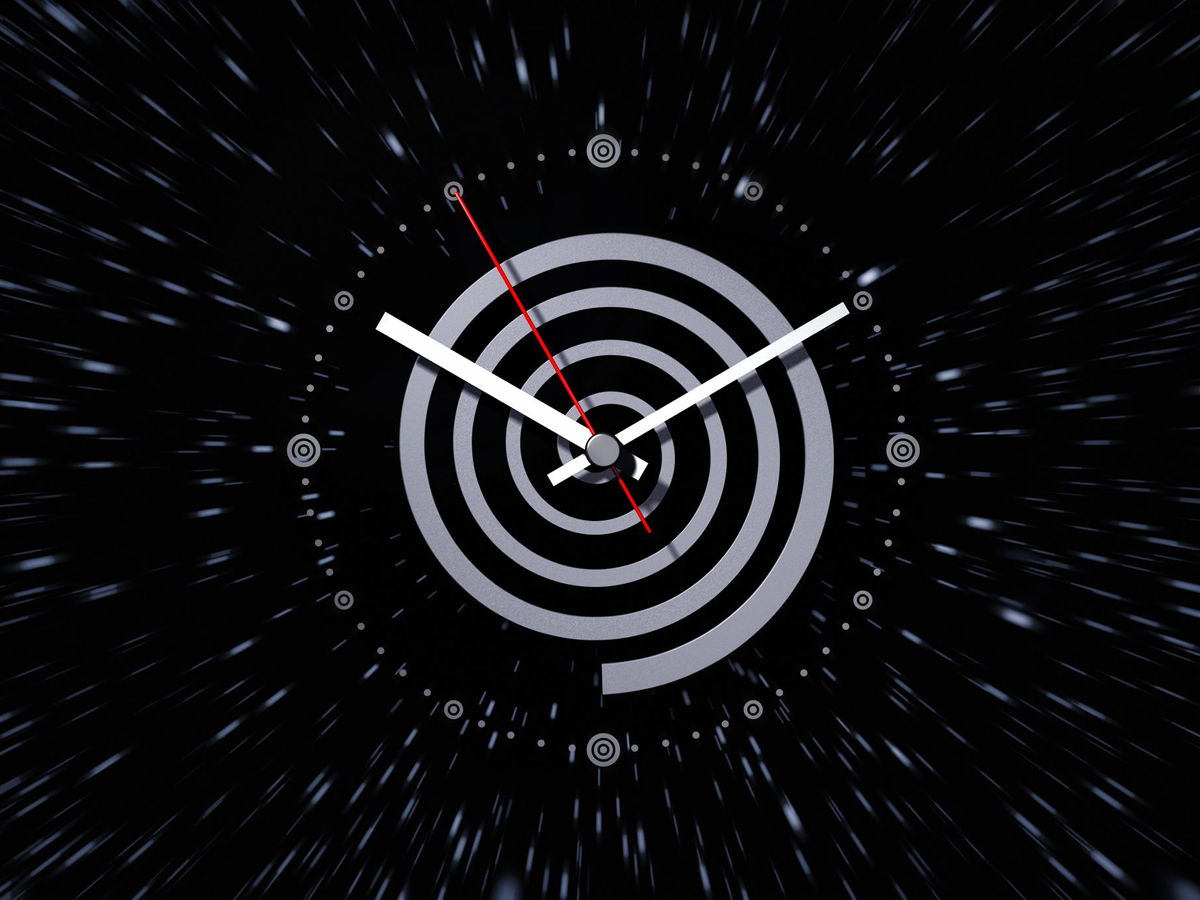Time travel is the movement between specific points in time, which is similar to the movement of an object or a body between different points in space, usually through the use of a theoretical device known as a time machine.
In philosophy and fiction, particularly science fiction, time travel is a widely accepted idea. . The 1895 novel by G. Wells, The Time Machine made it popular.
Whether time travel to the past is technically feasible, is not clear. In the form of special relativity and general relativity, forward time travel, outside the normal sense of time perception is a broadly studied phenomenon and well-understood. However, it is not possible with current technologies to make one body advance or delay more than a few milliseconds compared to another body. As for backward time travel, solutions that allow for it, such as a spinning black hole, can be found in general relativity. In theoretical physics, moving to an arbitrary point in space-time has very little support, and is typically related only to quantum mechanics or wormholes.

Some ancient myths show characters travelling through time. The Mahabharata mentions the story of King Raivata Kakudmi, who travels to heaven to meet Brahma and is startled to discover when he returns to Earth that many ages have passed. The relativity of time is stated by the Buddhist Pāli Canon. The Payasi Sutta speaks of Kumara Kassapa, one of the chief disciples of Buddha, who explains to the cynical Payasi that time moves differently in the Heavens than on Earth.
Also Read, All you need to know about the world’s first robot
Some theories, most notably special and general relativity, indicate that if these geometries or motions were possible, suitable geometries of spacetime or particular forms of motion in space might allow time to travel into the past and future. Physicists address the probability of closed timelike curves in technical papers, which are world lines that form closed loops in spacetime, enabling objects to return to their history. The equations of general relativity describing space periods that involve closed time-like curves, such as Gödel spacetime, are considered to be solutions, but the physical plausibility of these solutions is unclear.
Many in the scientific community consider it is extremely unlikely that backward time travel is feasible. Any theory that would allow time travel would introduce possible causality issues. The “grandfather paradox” is a textbook example of a dilemma involving causality: what if one were to go back in time and kill one’s grandfather before one’s father was conceived? Some physicists, such as Novikov and Deutsch, proposed that through the Novikov theory of self-consistency or a variant of the understanding of several worlds with interacting worlds, these kinds of temporal paradoxes could be avoided.

Theoretically, time traveling to the past is somehow possible in a few spacetime geometries of general relativity, where objects can travel faster than the speed of light, such as cosmic strings, traversable wormholes, and drives of Alcubierre. In some extreme situations, the theory of general relativity does imply a theoretical justification for the possibility of backward time travel, while objections from semiclassical gravity suggest that these loopholes could be closed when quantum effects are integrated into general relativity.
These semiclassical arguments led Stephen Hawking to formulate the conjecture of chronology defense, suggesting that time travel is prevented by the fundamental laws of nature, but without a theory of quantum gravity to join quantum mechanics and general relativity into a fully unified theory, physicists can not come to a definite judgment on the subject.
Under a system of field equations that determine the metric, or distance function, of spacetime, the theory of general relativity describes the universe. Exact solutions exist to these equations that involve closed time-like curves, which are intersecting world lines; some point in the world line’s causal future is also in its causal past, a condition that can be defined as time travel. Kurt Gödel, a solution known as the Gödel metric, first suggested such a solution, but his solution allows the universe to have physical features that it does not seem to have, such as rotation and lack of expansion of Hubble.
Wormholes are a hypothetical warped spacetime allowed by the general relativity equations of the Einstein field. Hypothetically, a suggested time-travel machine using a traversable wormhole will operate as follows: One end of the wormhole is accelerated to a large fraction of the speed of light, probably through some advanced propulsion device, and then brought back to the point of origin.

For any of these strategies, time dilation causes the end of the repositioned wormhole to be less aged than the fixed end as seen by an external observer; however, time connects differently through the wormhole than beyond it, so that synchronized clocks remain synchronized at either end of the wormhole as seen by an observer moving through the wormhole.


























